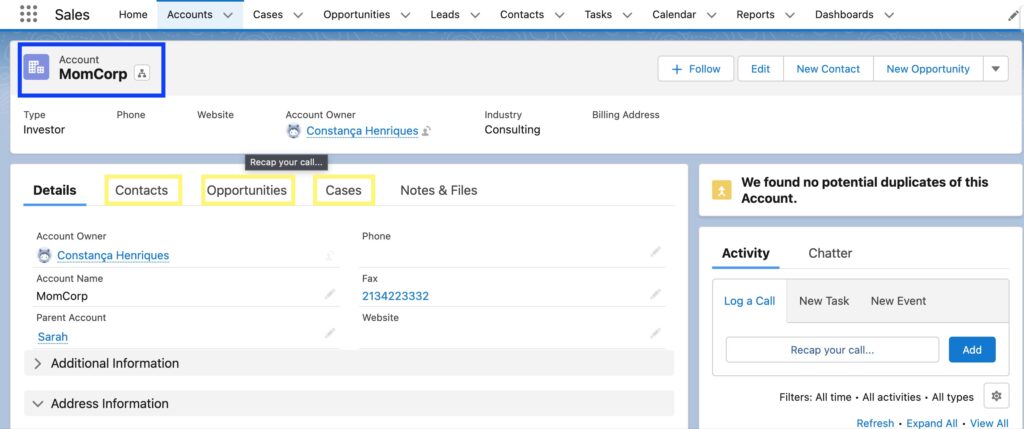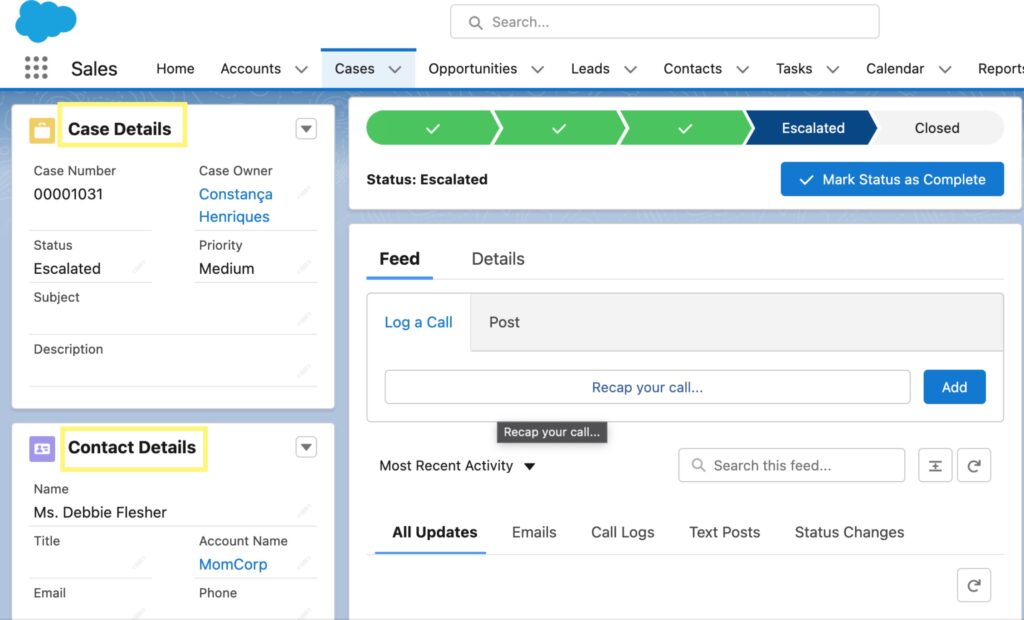
Let’s talk about parent-child relationships inside of Salesforce.
And what I mean by parent-child is how data is represented and related to one another. Speaking of related, a good way to see related records or related objects would be from the related tab on an individual record in Salesforce.
And so typically what you see in these related lists would be considered children to the Parent record and I’m in an account record right now. It’s a fictional company MomCorp.
And under the related list, we find contact, opportunity, and case records. These are three primary related objects to the account object.

And so I wanna give you a visual representation of this as well. So we, but that we’re on the account detail page related route. Records for contacts, opportunities, and cases. So if I go into a tool that’s available to Salesforce, administrators behind the scenes inside of setup called schema builder, I’ve highlighted or shown or selected only the account contact opportunity and case objects.

So this is how the data is structured or the objects are done to one another inside of Salesforce. So we have the parent, which is the account, and then you can hover over these blue lines here to see. That this particular line is a look-up relationship from case to account. So it’s looking up from the child level up to the parent level.
So the case is the child account is the parent same holds for the opportunity.
It’s a look-up relationship from opportunity up to the account. So it’s parent-child account is the parent opportunity, and finally the contact object and a lookup the relationship from the contact to an account. And so you can go to an account record and see the related list for contacts, cases, and opportunities.
But if you were to go to an opportunity, record, a contact record, or a case record in this instance, you can see the account that it belongs to, but that would be an individual filled called to account or account name or something like that. You won’t see the related list from the child level.
So you’ll be at the parent level. You can see the related list at the child level. You just have the field in here. Can’t really see this too well, but I’ll zoom in, in the schema builder and move this over. We have the account name on the opportunity. We have the account name on contact right here, and then finally we have an account on the case.
So from the front end, we can access any of these child records by clicking on them from the related list. So the contact of Debbie Flesher. We have in the details, you will see the account as account name, but you will not see a related list for accounts. There are other related lists that Debbie could potentially be connected with such as opportunities, cases, etc, but I can go back to the account level.

By clicking the account name there and as well, click on the opportunity. You’ll see the opportunity has related lists over here to the right, but you won’t find account-related lists. You’ll find the account under details and the account name is here. And then if I go back to the account finally related lists for cases, I can go on one of those and you won’t find related lists counts at the child level.
Once again, you will find the account name in the details section. So child records, you find the parent in the details section, but on the parent level, you’ll find children via a related list and not in the details.





